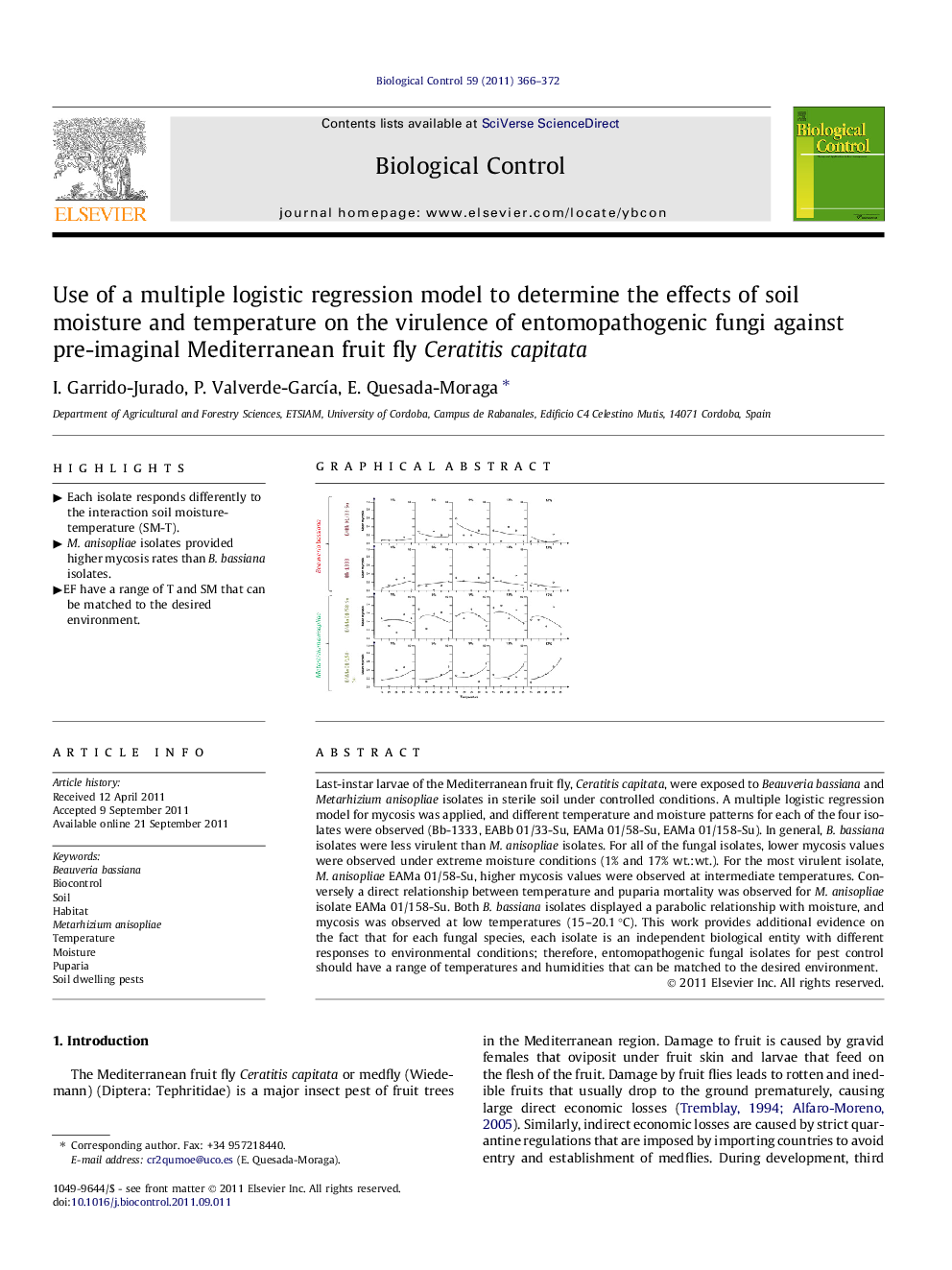| Article ID | Journal | Published Year | Pages | File Type |
|---|---|---|---|---|
| 4504156 | Biological Control | 2011 | 7 Pages |
Last-instar larvae of the Mediterranean fruit fly, Ceratitis capitata, were exposed to Beauveria bassiana and Metarhizium anisopliae isolates in sterile soil under controlled conditions. A multiple logistic regression model for mycosis was applied, and different temperature and moisture patterns for each of the four isolates were observed (Bb-1333, EABb 01/33-Su, EAMa 01/58-Su, EAMa 01/158-Su). In general, B. bassiana isolates were less virulent than M. anisopliae isolates. For all of the fungal isolates, lower mycosis values were observed under extreme moisture conditions (1% and 17% wt.:wt.). For the most virulent isolate, M. anisopliae EAMa 01/58-Su, higher mycosis values were observed at intermediate temperatures. Conversely a direct relationship between temperature and puparia mortality was observed for M. anisopliae isolate EAMa 01/158-Su. Both B. bassiana isolates displayed a parabolic relationship with moisture, and mycosis was observed at low temperatures (15–20.1 °C). This work provides additional evidence on the fact that for each fungal species, each isolate is an independent biological entity with different responses to environmental conditions; therefore, entomopathogenic fungal isolates for pest control should have a range of temperatures and humidities that can be matched to the desired environment.
Graphical abstractFigure optionsDownload full-size imageDownload as PowerPoint slideHighlights► Each isolate responds differently to the interaction soil moisture-temperature (SM-T). ► M.anisopliae isolates provided higher mycosis rates than B. bassiana isolates. ► EF have a range of T and SM that can be matched to the desired environment.
